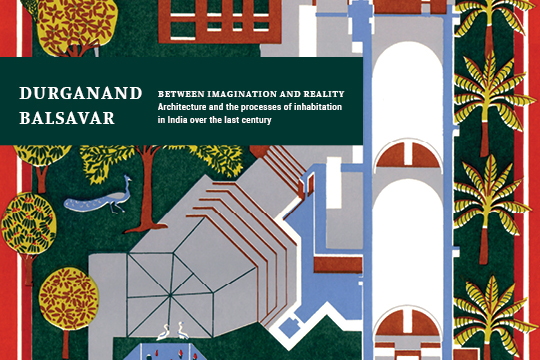Lecture: Durganand Balsavar Between Imagination and Reality

23/05/2018
Lecture by Indian architect and theoretician of architecture Durganand Balsavar titled Between Imagination and Reality: Architecture and the processes of inhabitation in India over the last century will happen on Monday, 28 May 2018, at 7 pm in Oris House of Architecture.
The cultural landscape of the Indian subcontinent has numerous layers of time. The Indian subcontinent has an ancient urban tradition of building some of the finest cities since Mohenja-daro and Harrapa. European traveller has often experienced it as chaotic and fluid, yet mysterious and defying a rational logic.
Since ancient times, when the first Universities were established in Taxila and later Nalanda, various traditions have evolved and spread to China, Japan and South-east Asia. The trade between Ancient Greece, Rome and India, has not been adequately researched. The cultural exchange with Europe too has rarely been recognized, through the Colonial period.
Ancient and Medieval towns in India, were evolved based on geometric cosmograms called Mandalas, that reflected a larger urban ecology of inter-dependence and independence, and expressed diversity. The medieval towns of Fatehpur Sikri and Delhi reveal layers and synthesis with the urban ideas from Persia, Iran and Iraq.
With India emerging as a free nation in 1947, Prime Minister Nehru invited Le Corbusier to design the City of Chandigarh – unfettered by the past. The emergence of a new modernism with Chandigarh and Ahmedabad – occurring against the context of the nationalistic revival – changed the trajectory of architecture and urbanism in India. Louis Kahn’s design for the Indian Institute of Management in Ahmedabad in collaboration with B. V. Doshi (1960) generated a seminal blueprint for education campuses in the free nation.
During that phase several young Indian Architects – Achyut Kanvinde, Charles Correa, Raj Rewal, and Mahendra Raj – trained at the American Universities of Harvard, Michigan, under Gropius, Frank Lloyd Wright and others, returned to India, reinforcing its modernist beliefs. The early projects of Charles Correa express a profound aspiration to embody the nation’s ancient learnings with the industrial forces of the 20th century. B. V. Doshi, (2018 Pritzker Laureate https://www.pritzkerprize.com/), who had previously apprenticed in Paris with Le Corbusier in 1958, explored a new trajectory to address the complex and often contradictory demands of the new nation. Laurie Baker, influenced by Mahatma Gandhi, evolved a humanistic contextual architecture that germinated from the site.
With economic liberalization in the 90’s, like most other nations, the frenetic forces of globalization impacted architecture in India – large scale infrastructure and the new cities. In this context, the projects of Bijoy Jain and several other architects take on a new significance in engaging with a meaningful search that explores materiality and inhabitation.
The talk by Durganand Balsavar explores the trajectories of Indian architecture over the last century and its emerging directions.
Biography
Durganand Balsavar graduated from CEPT, Ahmedabad with an exchange program at ETH Zürich (1990). After apprenticing in Paris, he worked with B. V. Doshi on seminal projects, before founding Artes – Human settlements Research Collaborative.
Durganand Balsavar is an invited member of Post Habitat III Summit in Barcelona and Berlin Climate Policy 2050 (VP). He was the sessions’ chair at Cambridge UK – Future Cities Summit. He has been on various juries and contributes to international and national journals on diverse themes from history, environment, urbanity and art. Artes has been recognized as a research-based practice and involved with the rehabilitation of war refugees and natural calamities. Artes has evolved rural community participatory processes, undertaking one of the largest rehabilitation projects in the wake of the tsunami 2005. The projects have been published by Routledge Press, MIT press, DOMUS and Art Australia.
Balsavar has been engaged in several international global studios with Schools of Architecture in UK, Newyork, Helsinki and Washington. He curated a discourse with B. V. Doshi, Juhanni Pallasma, Rolf Fehlbaum on Porosity, Paradox and Practice.
Balsavar has been involved in pedagogic ideation of Imagined landscapes through travel, drawings and models, linked to ancient traditions of India. His study at ETH Zürich enabled a deeper research into the Western Renaissance and the Modern Project in Europe. Interactions with Lebbeus Woods, reinforced a trajectory on the exploration of ideas and architecture to discourse social transformation.
He has authored a few publications and is on the Masterplan Committee of Chennai. Balsavar is the founder-curator of the Jaipur Architecture Festival and the Confluence Ten Forum.
